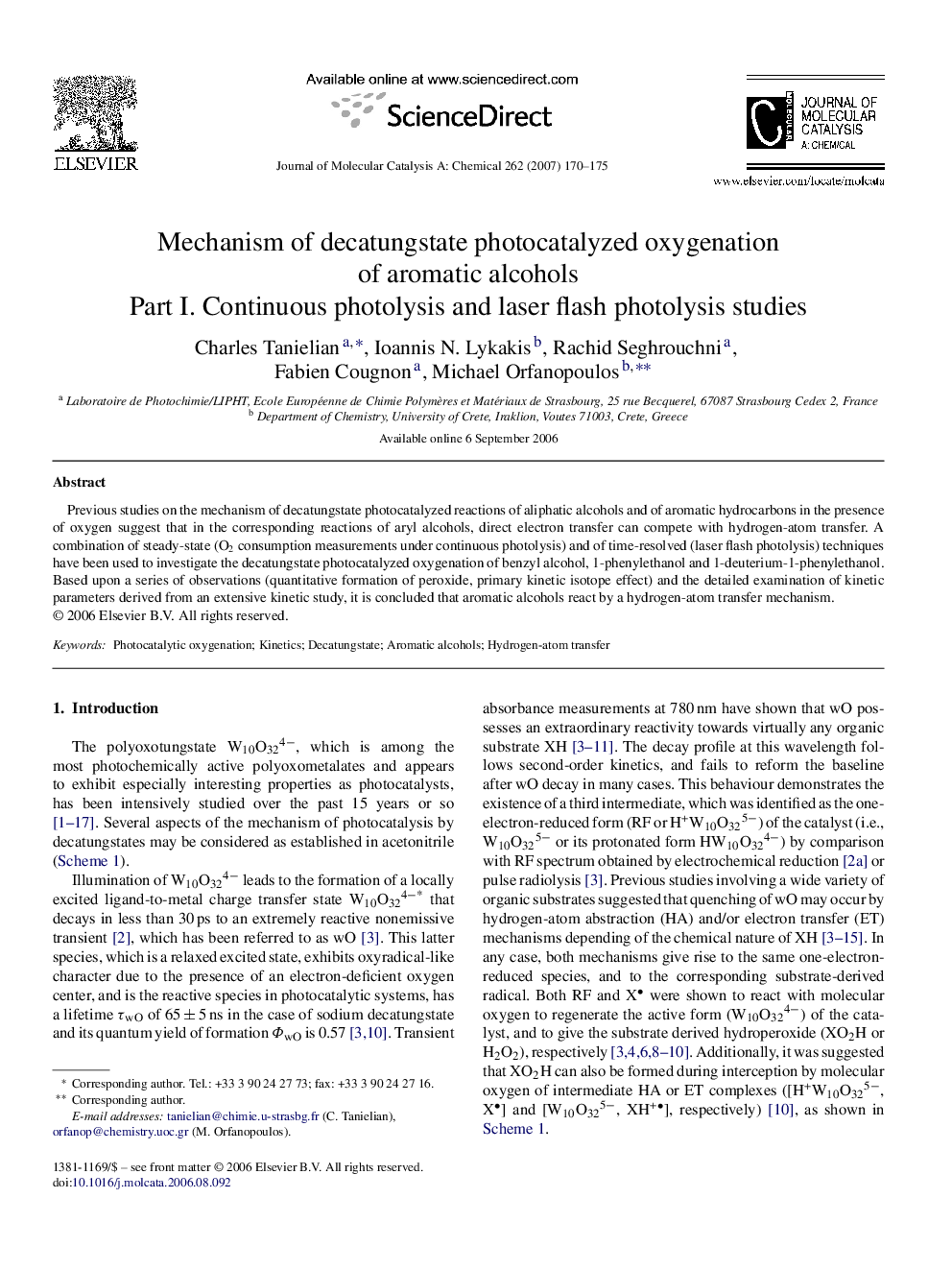| Article ID | Journal | Published Year | Pages | File Type |
|---|---|---|---|---|
| 68164 | Journal of Molecular Catalysis A: Chemical | 2007 | 6 Pages |
Previous studies on the mechanism of decatungstate photocatalyzed reactions of aliphatic alcohols and of aromatic hydrocarbons in the presence of oxygen suggest that in the corresponding reactions of aryl alcohols, direct electron transfer can compete with hydrogen-atom transfer. A combination of steady-state (O2 consumption measurements under continuous photolysis) and of time-resolved (laser flash photolysis) techniques have been used to investigate the decatungstate photocatalyzed oxygenation of benzyl alcohol, 1-phenylethanol and 1-deuterium-1-phenylethanol. Based upon a series of observations (quantitative formation of peroxide, primary kinetic isotope effect) and the detailed examination of kinetic parameters derived from an extensive kinetic study, it is concluded that aromatic alcohols react by a hydrogen-atom transfer mechanism.
Graphical abstractThe decatungstate photocatalyzed oxygenation of aromatic alcohols results in quantitative formation of peroxides and of the corresponding arylketones, which themselves may react under the experimental conditions. Determination of kinetic parameters characterizing the various intermediates and determined by O2 consumption under continuous photolysis and laser flash photolysis, permits us to conclude that aromatic alcohols react by hydrogen-atom abstraction. Figure optionsDownload full-size imageDownload as PowerPoint slide
